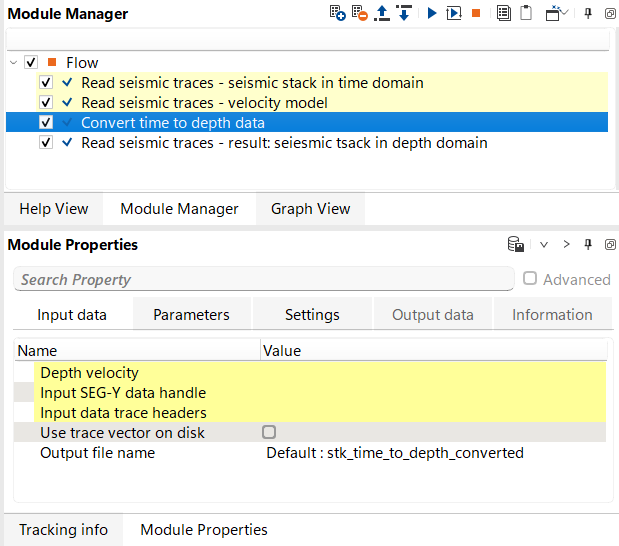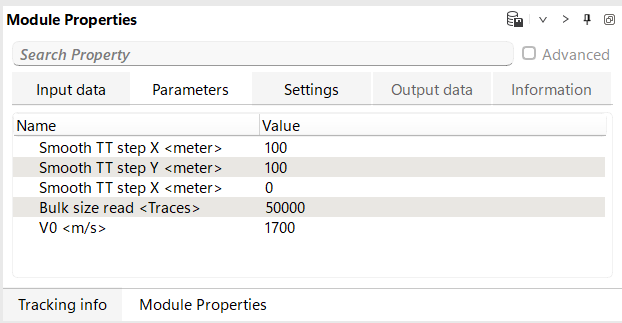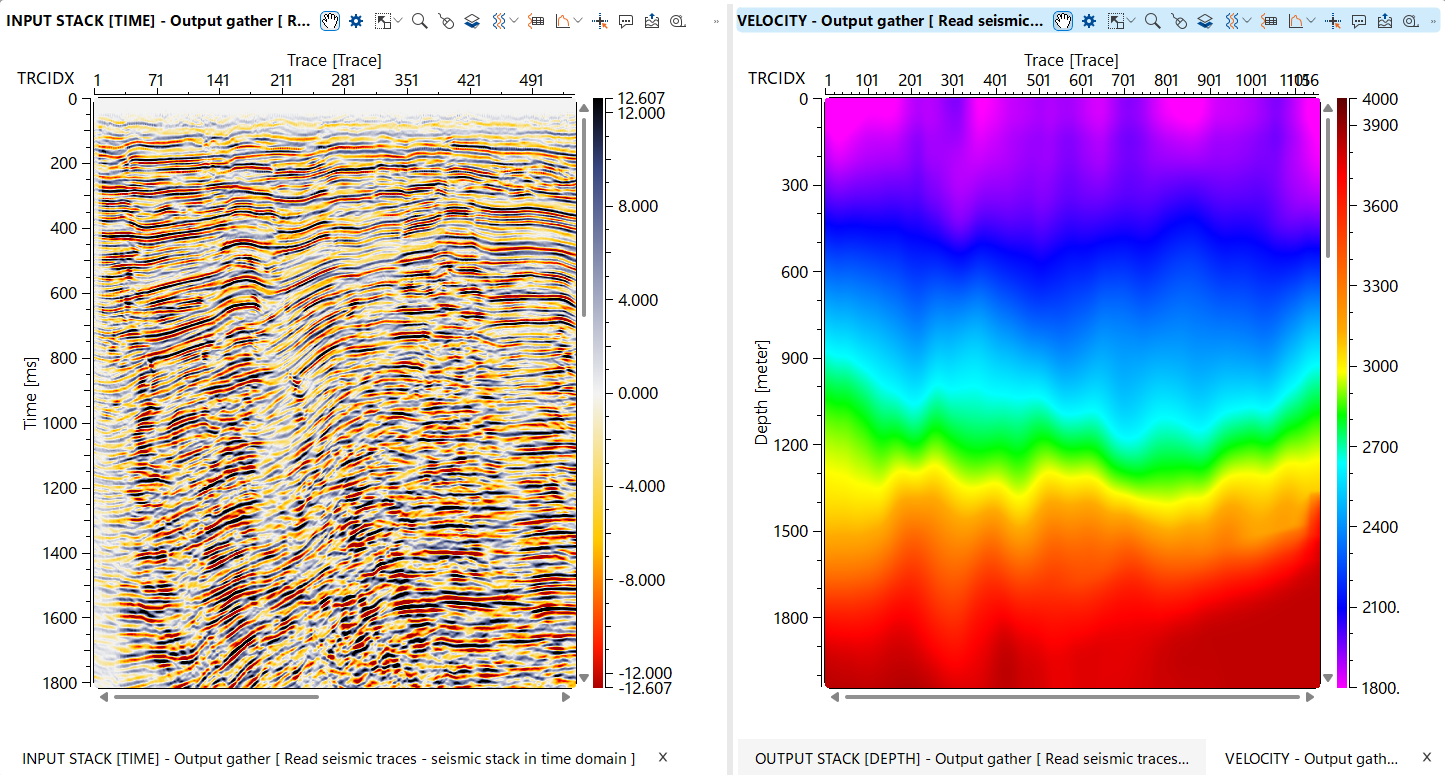Seismic data conversion from time to depth domain
![]()
![]()
This module is designed to convert seismic data from the time domain to the depth domain, a key step in seismic processing that enables more accurate subsurface imaging and interpretation. It utilizes seismic data collected in the time domain and a depth velocity model, which describes how seismic wave velocities vary with depth. The conversion process adjusts the recorded travel times by accounting for these velocity variations, by applying the depth velocity model, the module transforms the time-domain data into a depth-domain format, where the seismic events are positioned according to their actual depths within the earth. The output is seismic data in the depth domain.
![]()
![]()
Depth velocity - depth velocity model that will be used for time to depth conversion. Depth model in gather format in upload to RAM.
Input SEG-Y data handle - link to the seismic data file (usually it is out data set from Read seismic traces module).
Input data trace headers - link to the seismic trace headers (usually it is out data set from Read seismic traces module).
Use trace vector on disk - there is an extra option for saving RAM in case of very limited computer resources: link to the seismic trace headers on a disk (usually it is out data set from Read seismic traces module). Module will read traces headers directly from disk without necessarily to upload trace header vector into RAM.
Output file name - define an output file name for resulting seismic data set converted to depth domain.
![]()
![]()
Smooth TT step X - parameter is used to smooth the travel times during the conversion of seismic data from the time domain to the depth domain. It works in conjunction with the velocity model, which provides the necessary information for quickly calculating the travel times of seismic waves. The calculated travel times are then smoothed along the X-axis using this parameter. The smoothing process helps to reduce abrupt changes in travel time, leading to a more accurate and continuous depth conversion.
Smooth TT step Y - parameter is used to smooth the travel times during the conversion of seismic data from the time domain to the depth domain. It works in conjunction with the velocity model, which provides the necessary information for quickly calculating the travel times of seismic waves. The calculated travel times are then smoothed along the Y-axis using this parameter. The smoothing process helps to reduce abrupt changes in travel time, leading to a more accurate and continuous depth conversion.
Smooth TT step Z - parameter is used to smooth the travel times during the conversion of seismic data from the time domain to the depth domain. It works in conjunction with the velocity model, which provides the necessary information for quickly calculating the travel times of seismic waves. The calculated travel times are then vertical smoothed along the Z-axis using this parameter. The smoothing process helps to reduce abrupt changes in travel time, leading to a more accurate and continuous depth conversion.
Bulk size read - portion of the input data for reading from disk.
V0 - define velocity in he weathering zone (layer).
![]()
![]()
SegyReadParams
Execute on { CPU, GPU }
Distributed execution
Bulk size
Limit number of threads on nodes
Job suffix
Set custom affinity
Affinity
Number of threads
Skip
![]()
![]()
![]()
![]()
Workflow example:




![]()
![]()
YouTube video lesson, click here to open [VIDEO IN PROCESS...]
![]()
![]()
 * * * If you have any questions, please send an e-mail to: support@geomage.com * * *
* * * If you have any questions, please send an e-mail to: support@geomage.com * * *